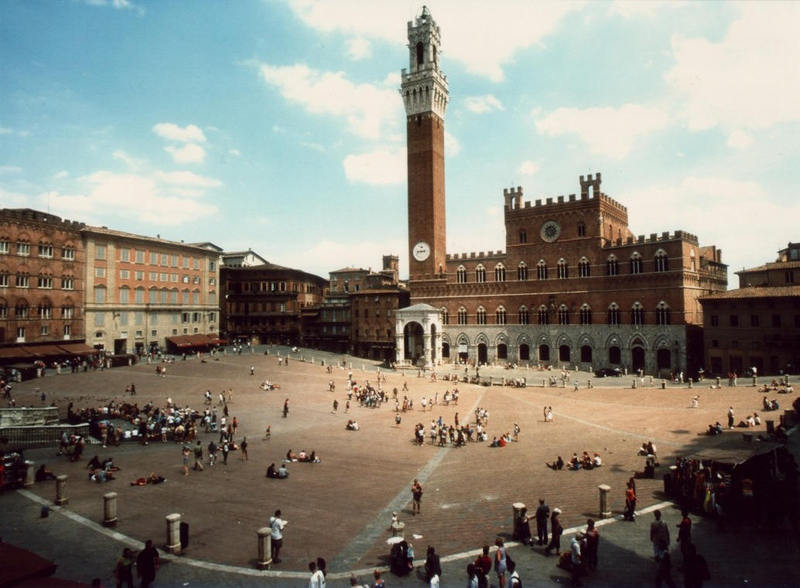Siena
Among the most fascinating art cities in Italy, Siena preserves ancient traditions very much felt by its medieval ruins. One of these is definitely the Palio, which has made the city famous all over the world. It takes place twice a year in the wonderful Piazza del Campo on 2 July to celebrate the Madonna of Provenzano and on August 16th for the Assunta celebration. A mixture of sacred and profane, in practice they challenge in turn, without excluding shots, ten horse jumps, representing 10 of the 17 historical contradictions.
The magnificent Piazza del Campo, one of the most amazing medieval environments in Italy, is the Palazzo Pubblico, completed in 1340, and the magnificent Torre del Mangia, which is 88 meters high, the first splendid example of Tuscan Gothic architecture, Other the civic museum. Going up to 400 steps, the Tower is able to give you some great emotions, offering an unforgettable panorama of the city.
To the Third of the City, the oldest part of Siena, is the spectacular Duomo. Completed only at the end of the 14th century after various vicissitudes, it is a masterpiece of the Italian Gothic Romanesque architecture, dominated by the dome and the high square tower, decorated with white and black horizontal stripes. Floor and a splendid marble pulpit by Nicola Pisano of 1266. An experience not to be missed is also the visit of the city along the itineraries proposed by the APT of Siena, to the discovery of the extraordinary artistic-historical beauties.
The most greedy will not resist the temptation to taste the famous Ricciarelli biscuits crafted or the Cantucci immersed in Vin Santo. Typical panforte is a sweet flavor of almonds, honey and spices. True paradise for lovers of Bacco, the territory of Siena is also the land of fine wines, Brunello, Noble, Chianti, Vernaccia, etc.
The area south-east of the province bordering Umbria is the Valdichiana. There are numerous and well-known thermal spas frequented every season of the year, from Chianciano, San Casciano dei Bagni and Montepulciano .
A strange way to visit the Sienese territory is aboard old littorine or steam trains, nestling in small country stations to discover the valley of Orcia, Crete, Mount Amiata and the Ombrone valley. For information, please contact the Ferrovie della Val d’Orcia www.ferrovieturistiche.it.
Some important centers of the Amiata area are Abbadia San Salvatore, Piancastagnaio, Radicofani.
In the territory of Chianti Sienese there are Radda, Castelnuovo Berardenga, Castellina, Monteriggioni.
In the hilly area of ??Crete you can not miss a visit to the medieval villages of Asciano, Buonconvento and San Giovanni d’Asso. In the hills northwest of Siena there are Colle Val d’Elsa and San Gimignano. Among the other Montalcino centers is famous for its homonymous wine.
How to get
For those coming from the north with the A1 motorway in the direction of Rome, at the Firenze Sud highway, exit Firenze Certosa and then take the Firenze-Siena motorway junction, continuing to the Siena P.ta San Marco junction.
Those coming from Rome via the A1 motorway must exit the Val di Chiana junction, located just after the border with Umbria, and follow the signs for Siena, along the SS-326.
Those who come from the A12 Genova-Livorno motorway, at the junction of Viareggio-Camaiore, take the A11 Firenze-Mare motorway towards Lucca-Firenze. Once at the junction Firenze Nord, you have to take the A1 towards Rome and then at Firenze Certosa junction, you have to take the Firenze-Siena motorway junction.





